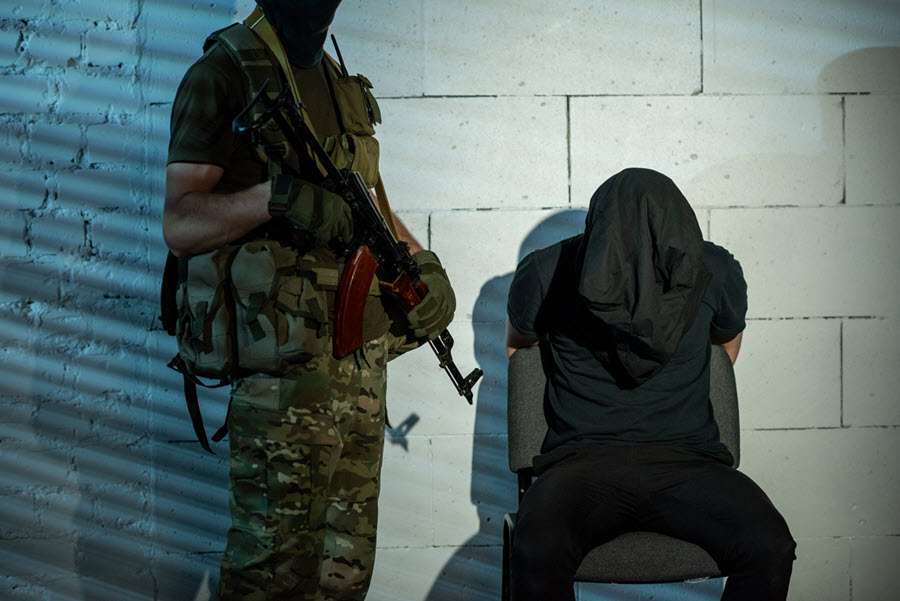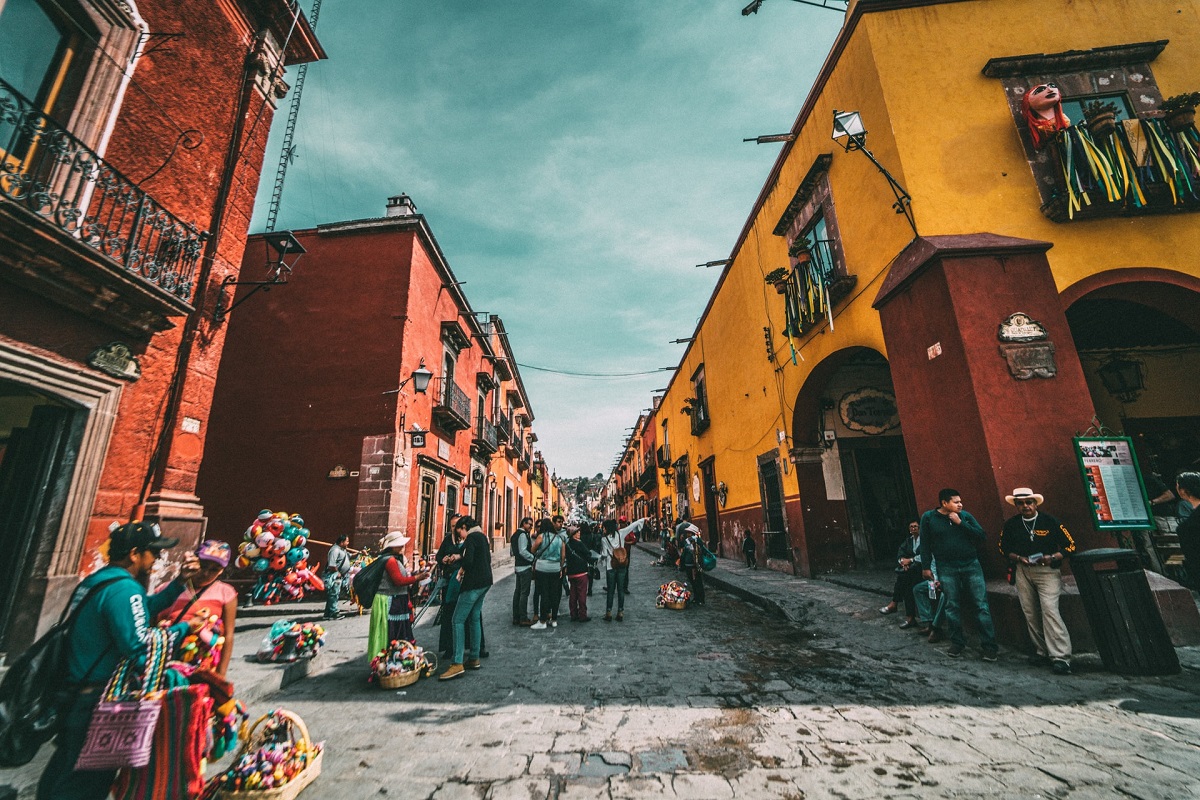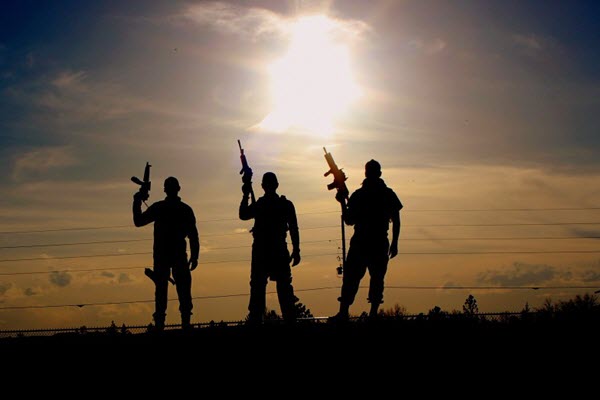If there’s a country that has mystified travelers for years, it’s Mexico. The Latin country is steeped in culture, beautiful white beaches, and tantalizing cuisines.
But behind its beauty lies a darker reality: rising cartel violence, corruption, and a surge in kidnappings, particularly involving Americans.
From express ransom plots to digital entrapment, Americans kidnapped in Mexico have become increasingly common headlines, forcing travelers, corporations, and diplomats to take notice.
The Surge in Kidnappings: 2021-2025
In 2021, there were 625 reported kidnappings, down from 831 cases the previous year. It is estimated that 300-400 cases involve Americans, most of whom are Green Card holders and dual citizens.
Our security experts believe the number could be higher since most kidnappings involving US nationals go unreported. Companies and families often avoid reporting kidnappings to authorities out of fear of retaliation or reputational damage.
Today, the situation has grown more complex—and far more dangerous.
Examples of Recent Kidnapping Cases (2023-2025)
2023: Matamoros Kidnappings
Incident Summary:
Four U.S. citizens from South Carolina crossed the border into Matamoros for a scheduled cosmetic surgery appointment. Minutes after entering, they were ambushed, abducted, and later identified as victims of mistaken identity. Two of them were killed, and two were eventually rescued.
Motive:
The Gulf Cartel, which controls much of Tamaulipas, believed the Americans were members of a rival drug-trafficking group entering their territory. This area is a known hotbed for turf wars, smuggling, and violence. The victims were mistaken for Haitian smugglers, a rival group operating in the region.
Victim Risk Factors:
- Entered a Level 4 “Do Not Travel” zone according to the U.S. State Department.
- Did not travel with security or coordination through safer, controlled corridors.
- Crossed the border for non-urgent elective surgery in a cartel-dominated city without local situational awareness or protection.
Key Insight:
Cartel checkpoints are often manned by lookouts or halcones (hawks). Anyone perceived to be infringing on cartel territory—especially foreigners—can be seen as threats or potential leverage, even if unintentionally.
February 2024: High-Value Ransom Plot in Quintana Roo
Incident Summary:
Joseph Constantine Buonincontri, a 35-year-old tourist from New York, was abducted near Tulum after befriending locals. He was held hostage in a jungle hideout and later rescued by Mexican security forces. His captors demanded $200,000 (USD) in ransom.
Motive:
This was a targeted ransom kidnapping, likely orchestrated by a local cell linked to the Jalisco New Generation Cartel (CJNG). Cartels operating in Quintana Roo are increasingly turning to “express ransom” tactics targeting tourists who appear to have U.S. connections or wealth.
Victim Risk Factors:
- Socialized with strangers near a known cartel zone (Tulum nightlife is often infiltrated by cartel scouts).
- Lacked a protective detail or secure itinerary in a semi-rural area outside resort zones.
- May have unintentionally signaled financial affluence or U.S. connections, making him a valuable target.
Key Insight:
Cartel cells in tourist-heavy regions like Tulum and Playa del Carmen scout targets using hotel check-ins, social media activity, and personal interaction. Americans with perceived wealth are seen as “low-risk, high-reward” ransom targets.

June 2025: Dating App Abductions in Puerto Vallarta & Nuevo Nayarit
Incident Summary:
Multiple U.S. citizens were abducted after arranging in-person meetups through dating apps. Victims were lured from their resorts or short-term rentals, then abducted, extorted, or held for ransom. The U.S. Embassy in Mexico issued an official Security Alert warning about these tactics.
Motive:
This was a deliberate entrapment scheme. Cartel-backed networks—particularly affiliated with CJNG—are exploiting dating platforms to lure high-value foreign targets. The goal is quick-turnaround extortion, ransom payments, or digital blackmail (including filming victims under duress).
Victim Risk Factors:
- Used dating apps while traveling solo in high-risk states without vetting.
- Agreed to meet in private or unsecured locations outside resort property.
- Lacked a check-in or safety protocol with friends, family, or colleagues.
Key Insight:
Cartels are evolving their tactics to match digital habits. Dating apps, classified listings, and even social media DMs are now weapons of exploitation. Victims often don’t realize the risk until they’re in a controlled environment with no exit.
Other Notable Cartel Kidnappings
Four Women Kidnapped and Decapitated by Drug Cartel
In March 2022, four women who were kidnapped and decapitated by a rival drug cartel had their deaths filmed for their families to watch in horror. The four captives, members of the Gulf Cartel, were captured by a rival gang Los Zetas while on a drug delivery assignment.
Zetas members rounded up the women and slit their throats before beheading them on camera as a warning to the Gulf Cartel.
U.S Citizens Assisting Cartel Kidnappings
In March 2017, Mexican customs officials stationed in Naco, Sonora, watched as a man emerged from the trunk of a white sedan. His hands and feet were shackled, and his mouth was taped shut. The man walked over to the customs officers and begged for their help.
Meanwhile, 54-year-old Roxanne Carpenter, the driver of the white sedan, was completely oblivious to the fact that her captive had escaped. She drove a couple of hundred yards south of the US-Mexico border to a plaza where she planned to collect 30-pounds of marijuana from members of the Mexican drug cartel.
The drugs were a bounty for turning over the man they had been trying to track down.
When the cartel members discovered that the wanted man was not in the vehicle’s trunk, they returned the car to Ms. Carpenter and instructed her to run. FBI agents caught up with her a few hours later as she crossed the border into Naco, Arizona. It later emerged that Carpenter, alias “Rocky,” was not acting alone. While she was the mastermind of the entire plan, she recruited her friends to help her execute her plan.
Rocky charged 23-year-old Fausto Velazquez with negotiating the bounty with the cartel members. 40-year-old Brian Meyers, a friend of the victim, was supposed to lure him to the car, while 29-year-old Phoelix Begay was supposed to be the “muscle” in the entire plan.
In the initial plan, they negotiated for a $37,000 bounty. The cartel countered that offer with a truck. However, since it would be impossible to split the truck among them, they settled for 30 pounds of marijuana instead. While the negotiations were going on, the victim lay handcuffed and shackled in the trunk of the car.
Carpenter was sentenced to serve 14 years behind bars in federal prison.
Why do cartels kidnap?
A Lucrative Side Business
Kidnapping is simply a lucrative and sustainable side-business for criminal organizations around the world. It requires low overhead, minimal training, and often delivers high returns.
Cartels use ransom payments to fund their operations, pay corrupt officials, and purchase arms.
The kidnapping issue in Mexico is also largely supported by America’s insatiable drug demand which allows these criminal organizations to prosper and grow.
Mexican cartels also rely on extensive personnel recruitment and massive collections of assault rifles and an assortment of firearms, most of which originate in the US. Cartels use these weapons to effectively defend their “plazas” from the Mexican police, military, and rival gangs.
Skills Transfer from Drug Trade
Criminal networks trained in trafficking and logistics easily adapt to abduction tactics. They apply the same surveillance, enforcement, and intimidation tools to the kidnapping business.
In short, it is an easy way to increase ROI in their existing skills and trade.
A Broadened Target Base
The drug trade relies on consumer demand, but kidnapping-for-ransom schemes can target everyone.
Previously, only political elites or business magnates were targets. Now, anyone perceived as “middle-class American” can be profitable. This includes tourists, dual citizens, remote workers, and digital nomads.
66% of kidnappings in Mexico now fall under the “express” category, where victims are abducted for 1–3 days to maximize payout while minimizing exposure.
The Proliferation of Crime In Mexico
Mexican cartel kidnappings were bad enough when they were perpetrated by a handful of these criminal organizations 20 years ago. Most of these gangs have since splintered into several groups, all vying for a slice of the drug pie.
The proliferation of these gangs also means that these criminal enterprises have more costs to meet and, therefore, require more funding. The domino effect is that the number of kidnappings for ransom has also increased.
Another reason for the rising number of criminal groups in Mexico was the aggressive security policies instituted by one of the country’s former presidents, Felipe Calderon. These policies, dubbed the “Kingpin Strategy,” were aimed at arresting various leaders of the drug cartels, disrupting what used to be a somewhat peaceful balance of power among the more established criminal organizations.
But instead of improving the situation, disrupting the balance of power opened up opportunities for the most ambitious and violent members to create their own cartels. This created more competition for control of the drug trade by criminals who were willing to be far more violent to assert their dominance.
One ripple effect of that was an increased focus on kidnappings of Americans, becoming a bigger part of the cartel business model.

Police Corruption in Mexico
The authorities have been largely unsuccessful in their efforts to curb the rising kidnapping cases in the country. While the drug demand in the U.S. is primarily responsible for sustaining the Mexican cartels, a large part of this failure can also be attributed to the high levels of official corruption in Mexico’s government.
Police officers are often involved in these kidnappings either by getting a cut from the drug cartels to “look the other way” or working in collaboration with criminal gangs.
According to a study conducted by the National Commission on Human Rights in Mexico, 85-95% of the surveyed respondents believe that the vast majority of officers in the Mexican police force are corrupt. Officers may:
- Be directly involved in abductions
- Accept cartel bribes to ignore incidents
- Leak victim information for compensation
As a result, kidnapping perpetrators feel that the odds of police officers bringing them to book for their crimes are slim to none. Less than 2% of all kidnappers are arrested and convicted for their crimes. Those odds serve as a big incentive for members of criminal gangs to carry out kidnappings for ransom.
How to Avoid Being Kidnapped in Mexico
Despite the rampant threats in Mexico, corporate America continues to do business there. This state of affairs is not likely to change any time soon, given the lucrative opportunities present there.
If you intend to travel to Mexico for work or leisure, you can take some steps to protect yourself and reduce your kidnapping risk.
Pre-Travel Risk Assessment
If you’re not traveling with security, avoid short-term rentals, Airbnb listings, or solo travel into urban zones. Some Airbnb owners have been known to collude with gang members to get you kidnapped. Stay at known, reputable resorts with verified incident histories.
Stay at High-Security Resorts
If you’re traveling to a tourist destination like Cancun and don’t have a personal protection detail, don’t be tempted to leave the safety of the resort you’re staying in to explore the city. That’s where danger lurks.
Avoid Public Dating App Use
It’s best to avoid this behavior altogether. But if you’re insistent on using dating apps abroad, avoid meeting in private or residential spaces, and always inform someone of your plans. Use a pseudonym and do not disclose financial details or travel itinerary online.
Fly on Commercial Airlines
You need to be aware of the risk that comes with flying and parking a private jet at a Mexican airport and implement appropriate security measures.
Cartel spotters exist at all private terminals throughout Mexico and information about your jet’s tail number can be used to track your whereabouts, putting you in danger.
While flying commercial versus private doesn’t eliminate your threat of being kidnapped, it can at least reduce the threat. And if flying by private jet is an absolute must, then you should absolutely hire a security detail that has prior experience operating in Mexico in kidnap prevention operations.
Arrange Safe Transport
There’s a lot of corruption in the country’s transportation sector. Taxi drivers have been known to scout for vulnerable tourists and tip off the cartel for a potential kidnapping target.
If your company often sends executives to Mexico for business, you might want to rethink the existing policies on using taxis or ride-sharing services like Lyft and Uber.
Rather than walk off the plane and hail a taxi at the airport, arrange for transportation ahead of time through a reputable, well-known company.
Alternatively, if you hire a security detail, a security driver should be transporting you during each of your movements while in-country.
Understand Your Duty of Care Obligations to Employees
Companies must go above and beyond their standard duty of care obligations and institute real policies detailing what to do in kidnapping or any other crisis before it happens.
Employees need adequate training on travel security protocols, situational awareness, and response plans. They also need to be briefed on the importance of maintaining a high level of readiness and constant communications. Failure to do so puts your staff—and your brand—at unacceptable risk.
At a minimum, you should be looking at implementing a robust kidnap and ransom insurance policy to cover your employees.
Don’t Become Another Statistic
Being kidnapped in Mexico is not just a theoretical risk. It’s happening, and the costs—emotional, physical, and financial—are devastating. Rescue operations can exceed $30,000 per day, and most people are completely unprepared.
If you’re heading to Mexico for work or pleasure, don’t rely on luck. Plan with professionals, stay informed, and take real precautions.
Contact us for a complimentary security evaluation based on your itinerary, exposure level, and business objectives.




